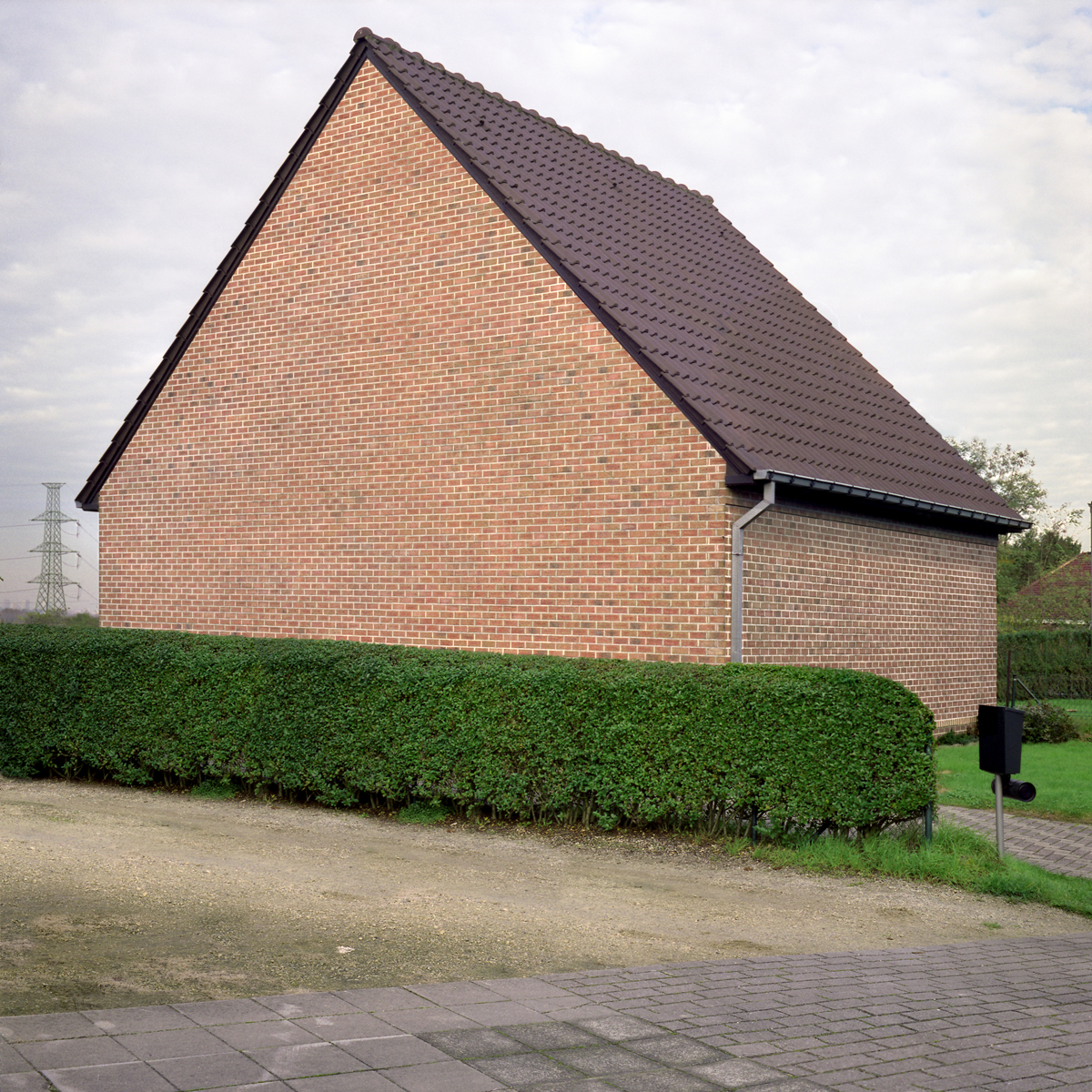Xavier Delory
The Post-produced world
Objectivity, in the world of architecture, is not even presented through the camera lens: Lighting, the choice of perspective, scale… They are factors that alter the perception of the space facing the spectator, creating a conception as varied as the subjects to which it is shown, moving away in many cases from reality until it ends up becoming something different, alive by itself alien to the space from which the image was extracted.
The Belgian artist Xavier Delory takes the idea of constituting a unique message through photography further, generating authentic threaded discourses through the direct alteration of his images. Through photographic editing and 3D modelling, Xavier intentionally alters form and texture, extrudes or exploits as he pleases, until the architecture that he photographs becomes a denatured element, with such irreverence and daring that he is not afraid of Le Corbusier himself.
Looking at Delory’s work for the first time, the naturalness with which the modification in the photograph takes place is surprising: A chilling sensation that, although it may seem so, it is not real. Maybe then we’re in the author’s clutches, because it’s time to ask ourselves, does it really matter?
The work sends out a much more forceful message than the fiction or not of his portraits: It makes us rethink what we see in the real world. And the fact is that, in Xavier’s words:
“To make people rethink how they see architecture is one aim of my work, but I would not want them to retain only the message. I think the content of my work is important but can not be separated from the form that embodies it.”

©2019 Xavier Delory
The inspiration for this artist comes from statements and books from the world of architecture. Thus, “Learning from Las Vegas” or “New York Delirium” are the basis books of his work. In addition, he stands on the crest of the wave seeking controversy, basing his work on a deep and critical knowledge of the history of architecture.
“My photographic work explores different patterns of modern man and society throughout architecture. Architecture reflects societies’ and even civilizations’ choices. It is thus a perfect subject to learn about mankind.”
Xavier Delory, 2019
You can access Xavier Delory’s work here through his website, or enjoy the selection we bring you in our gallery:
On the series present in this selection, Xavier Delory dedicates a few words to us:
“Hábitat“, 2006-08
Our countryside (in Belgium as well as in a many other western countries) is monopolized by one specific type of houses called ‘clé sur porte’ (turnkey) (def: Urban prefab cluster of similar forms implanted in the landscape without any effort of integration). The cycle ‘Habitat’ throws a look at this type of ‘architecture’. The concept of protection and stereotyped block is pushed to its extremes (similar to our withdrawal into on ourselves and our formated lifes).
“Urban forms“, 2010-13
The aim of this project is to study the recurrent characteristic of Brussels as first field of research. The chapters describe the various districts usually composing a city : the residential areas (Barre d’îlot), the business areas (Domino), the tourist areas (Façade libre) and the old industrial areas (Gentrification).
“Pilgrimage along Modernity”, 2014-17
“Pilgrimage along Modernity” is a tribute to the Modernist architectural movement born in the 1920s.
This tribute takes the form of digital artistic interventions inspired by the unique context of each of the buildings studied. This new perspective on architecture aims to develop an original meaning or to accentuate an already existing one. This method of collage, of mixing and recycling pre-existing forms could be considered Postmodernist, in opposition to the philosophy of Modernist architects characterised by its search for originality, the desire to create new forms and its presumptive concluding of the narrative.
The buildings covered in this series range from the purist period of the 1920s to the more lyrical period of the 1960s.
For some, Modernist architecture is synonymous with progress, for others, with totalitarianism and formalism. This period of architectural history is still alive in spirit, as seen in the sometimes very virulent articles and books still published on this subject.
All the graphic material belongs to ©2019 Xavier Delory.
References_











